This article was co-authored by wikiHow Staff. Our trained team of editors and researchers validate articles for accuracy and comprehensiveness. wikiHow's Content Management Team carefully monitors the work from our editorial staff to ensure that each article is backed by trusted research and meets our high quality standards.
This article has been viewed 13,529 times.
Learn more...
Seasoning a carbon steel wok will protect it from rust, create a non-stick surface, and can even add flavor to dishes as it builds up over time! Clean and “blacken” a new carbon steel wok over high heat to remove factory residues and prepare it for seasoning. Use oil to coat your new wok and season it to protect it and create a base layer of seasoning that will build up over time and make it easier (and tastier) to cook with your wok.
Steps
Cleaning and Heating a New Wok for Seasoning
-
1Scrub your new wok thoroughly with soap, water, and a scouring pad. New woks usually come covered in some protective oil coating from the factory, so it’s important to clean off all of this before seasoning. Scrub you new wok in the sink with hot water, dish detergent, and a scouring pad to remove all the factory residue.[1]
- You can use a sponge with a scrubby side instead of a scouring pad if you don’t have one.
-
2Open up windows in your kitchen and turn on the stove ventilation. You will be creating a lot of smoke as you season your new wok, so it’s important to ventilate your kitchen as much as possible. Turn on the fan above your stove if you have one and open all windows and doors.[2]
- If you have any small portable fans, put them in the windows facing outside and turn them on to help ventilate the kitchen.
Advertisement -
3Wrap any wooden handles of your wok in tin foil. This will protect them from getting scorched as you tilt the wok during the seasoning process. Cover all the exposed wood in tin foil and wrap it tightly so it doesn’t fall off during seasoning.[3]
- You can get away with just wrapping the lower portion of the main wooden handle if you want to leave the top part exposed to hold onto. It’s most important to cover the “helper handle”, the smaller of the 2 handles, because it will be closer to the stove’s burner as you tilt the wok around.
- Not all woks have 2 handles and not all handles are wooden. If your wok doesn’t have wooden handles, then no there is no need to wrap them!
-
4Set your wok on a burner over high heat until it starts to change color. Turn on a burner to the highest heat and set your wok on it. The goal is to start to blacken the steel to create a first protective layer called black rust”.[4]
- Your wok may turn black, brown, blue, yellow, or some combination of these colors. Every carbon steel wok has a slightly different composition that can make it change different colors.
- Note that a gas stovetop will work much better for seasoning a wok. You can still do it on an electric stovetop, it will just be harder to evenly heat the sides since there are no flames.
-
5Rotate and tilt the wok around the burner to evenly heat all the sides. Start to tilt and “roll” the wok around the burner when it has started to change color to blacken the steel on the sides as well. It might not change color in all areas, but just try to heat it up as evenly as you can until it stops changing color.[5]
- ”Black rust” is a protective layer that helps prevent corrosion. It also helps fats bind to the metal, which is an important part of seasoning a new wok!
-
6Turn off the burner and let the wok cool when it is evenly heated. Stop rotating the wok around the burner and turn it off when it stops changing color. Let it cool down completely.[6]
- You can also pour cold water into the wok to cool it quicker. Be careful of splashing hot water if you do this.
-
7Give the wok another light scrub and rinse with cool water. Wash the wok in the sink again after it has cooled down. Lightly scrub it with a scouring pad, dish detergent, and cold water, then rinse it clean.[7]
- Don’t try to scrub the metal back to its original color. The metal will be discolored from the heat, but it is not anything that you can scrub off. Just give the wok a quick once over and a final rinse to remove any remaining factory residues.
-
8Dry off your new wok thoroughly before seasoning. Wipe the wok dry with a clean dish towel after you wash it. You will be heating up oil in the wok to season it, so you don’t want any water droplets left in the wok when you pour the oil in.[8]
- If you don’t have a towel to dry the wok, then heat it up on the stove over medium heat until all the water evaporates.
- Your wok may look black, but this is just discoloration of the metal (not residue), so don’t worry about it coming off on the towel.
Seasoning a New Carbon Steel Wok with Oil
-
1Pour 1 US tbsp (15 mL) of oil in the wok. Use oil with a high smoking point such as vegetable or canola oil. Don’t use oils with a low smoking point like olive or sesame oil.[9]
- Other types of oils you can use are peanut, flaxseed, soybean, or corn oil.
- You should always season a new wok after cleaning it and before you cook in it for the first time. As long as you use your wok regularly after seasoning it for the first time, then you won’t need to repeat this process.
-
2Heat the wok on a burner over low-medium heat. Set your wok with the oil on a burner over low-medium heat and let it heat up for about 1 minute. This will make it easier to coat the wok with the oil and start the seasoning process.[10]
- You just need to heat the oil up enough to break down the oil into fatty acid chains that will absorb into the carbon steel and season it. Low-medium heat is sufficient to do this. High heat will cause unnecessary smoking.
-
3Spread the oil around to coat the wok evenly all over. Tilt the wok around to coat all the sides with the heated oil. Keep heating the wok for another 1 minute after it is completely coated with the oil.[11]
- You can also use a metal spatula to help push the oil around and completely cover all the sides of the wok.
- Make sure to move the wok around slowly and gently to avoid splashing hot oil on yourself.
-
4Turn the burner off and wipe the oil around with a folded paper towel and spatula. Fold up a paper towel into a square that has 4 layers. Use a metal spatula to push the paper towel around the wok to finish coating it with the oil and absorb extra oil.[12]
- If you don’t have a metal spatula yet, then let the wok cool down first and do this with your hands. Be very careful to let the wok completely cool so that you don’t burn yourself.
-
5Repeat the process to add another coat, or cook your first dish. Your wok is ready to cook on at this point, but you can repeat the process to give it an extra coat of oil for an even more non-stick surface and added protection. Try cooking your first stir fry if you are ready to get started![13]
- You can also try cooking aromatics such as onions, chives, ginger, and garlic in the oil for the second coat of seasoning. This can start to build some nice flavors into the seasoning.
- Cooking with your wok regularly will naturally build up the seasoning. As long as you use it often, your wok will get better with time! If you haven’t used your wok in a long time, simply repeat the seasoning process as if it were new before you cook with it again.
-
6Wash your wok with plain hot water and dry it with a clean towel after cooking. Never use soap or abrasive scrubbing pads to clean your wok after you cook. This will remove the seasoning you worked so hard to add![14]
- Part of what seasoning your wok does is add a non-stick coating to the wok, so it should be easy to clean after each use with just hot water and a clean dish towel or paper towel. If there are any bits of food stuck on, you can add 1 tbsp (17.06 g) of salt to the pan and scrub them off with a paper towel.
Warnings
- Be very careful when seasoning your wok not to touch it when it is hot or splash hot oil on yourself. Make sure the wok is only on low-medium heat when you add oil, and let it cool down completely before you touch it with your hands.⧼thumbs_response⧽
References
- ↑ https://www.seriouseats.com/2010/06/equipment-how-to-buy-a-wok-which-wok-is-the-best.html
- ↑ https://www.thekitchn.com/how-to-season-a-wok-cooking-lessons-from-the-kitchn-171893
- ↑ https://cooking.stackexchange.com/questions/77661/can-i-put-my-cast-iron-pan-with-wood-handle-in-the-oven
- ↑ https://www.seriouseats.com/2010/06/equipment-how-to-buy-a-wok-which-wok-is-the-best.html
- ↑ https://www.seriouseats.com/2010/06/equipment-how-to-buy-a-wok-which-wok-is-the-best.html
- ↑ https://www.thekitchn.com/how-to-season-a-wok-cooking-lessons-from-the-kitchn-171893
- ↑ https://www.thekitchn.com/how-to-season-a-wok-cooking-lessons-from-the-kitchn-171893
- ↑ https://www.thekitchn.com/how-to-season-a-wok-cooking-lessons-from-the-kitchn-171893
- ↑ https://www.thekitchn.com/how-to-season-a-wok-cooking-lessons-from-the-kitchn-171893
- ↑ https://www.thekitchn.com/how-to-season-a-wok-cooking-lessons-from-the-kitchn-171893
- ↑ https://www.seriouseats.com/2010/06/equipment-how-to-buy-a-wok-which-wok-is-the-best.html
- ↑ https://www.finecooking.com/article/how-to-care-for-your-carbon-steel-wok
- ↑ https://www.finecooking.com/article/how-to-care-for-your-carbon-steel-wok
- ↑ https://lifehacker.com/how-to-season-a-wok-5830627


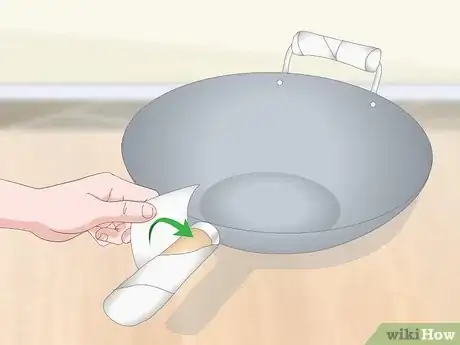

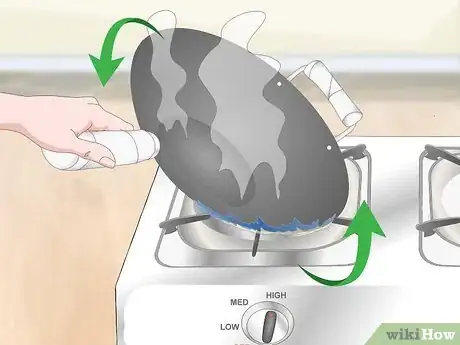
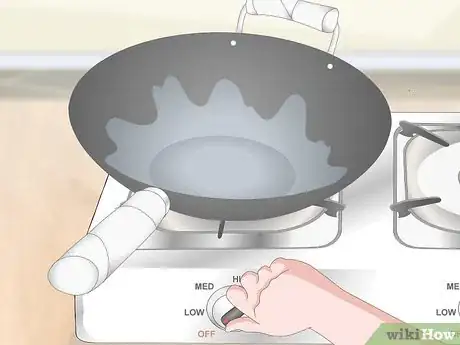
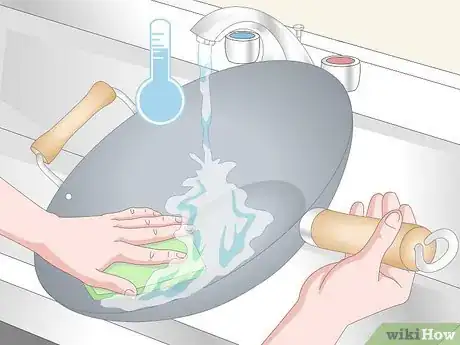

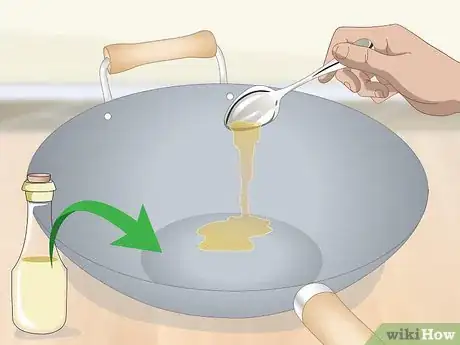
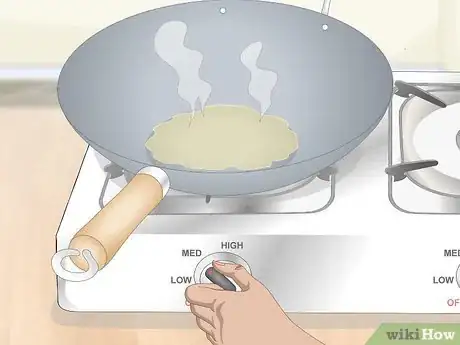
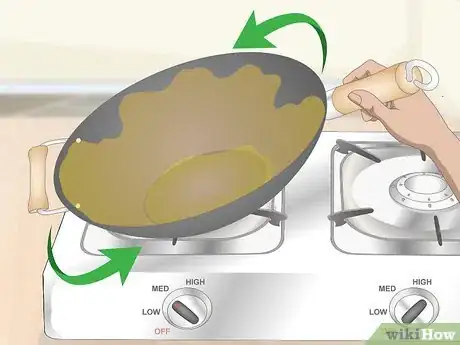
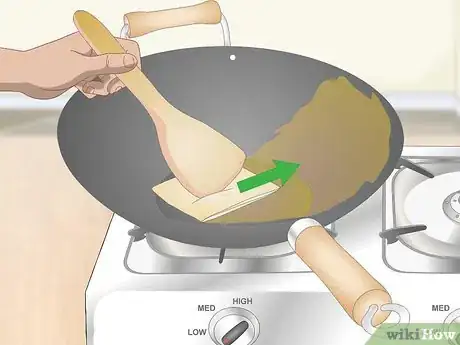

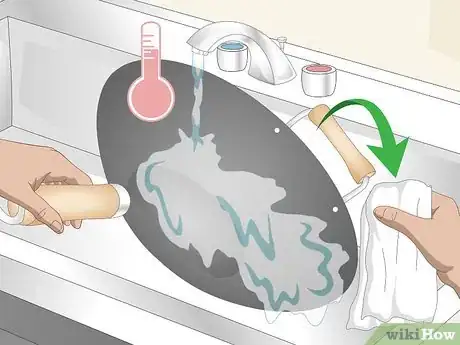

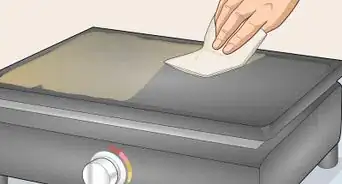



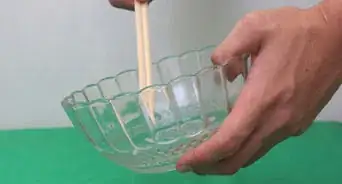










-Step-12-Version-2.webp)




































